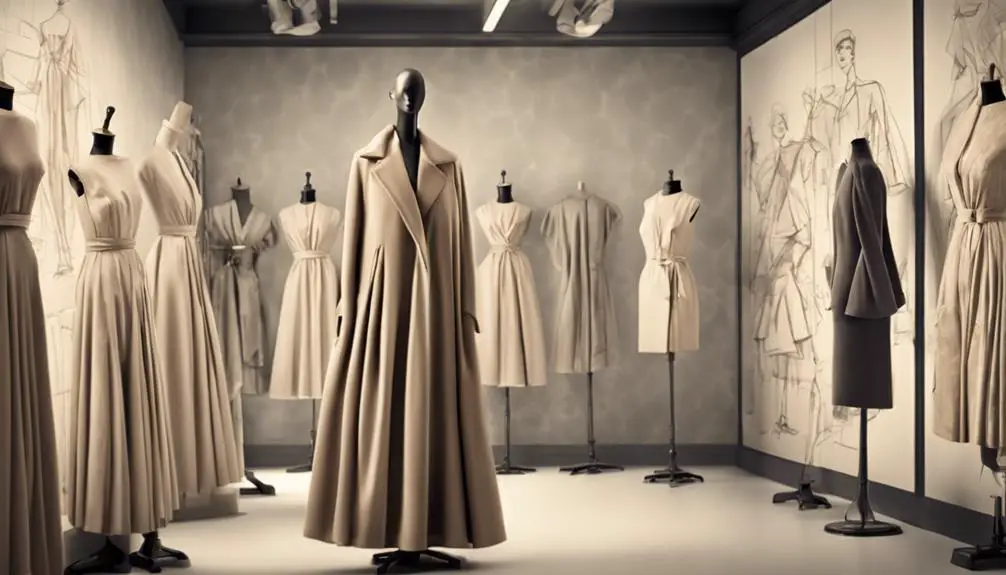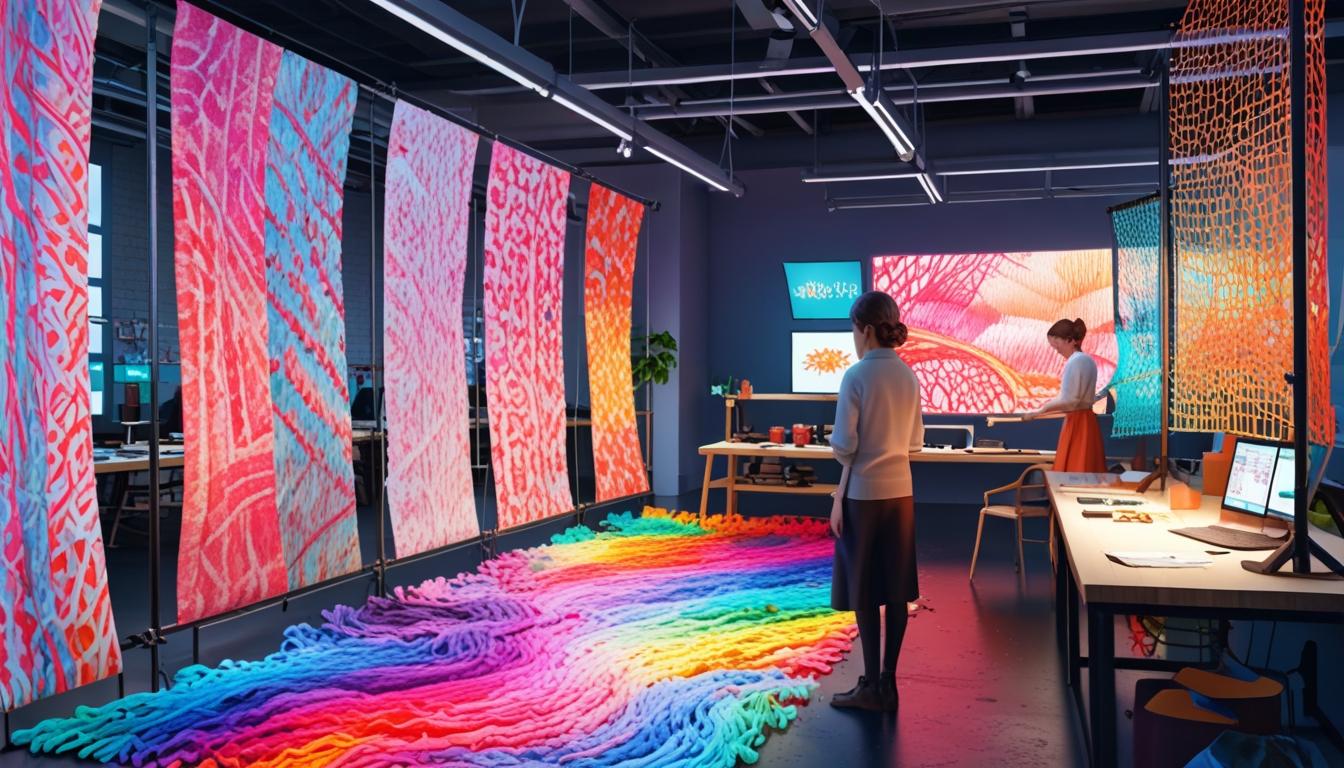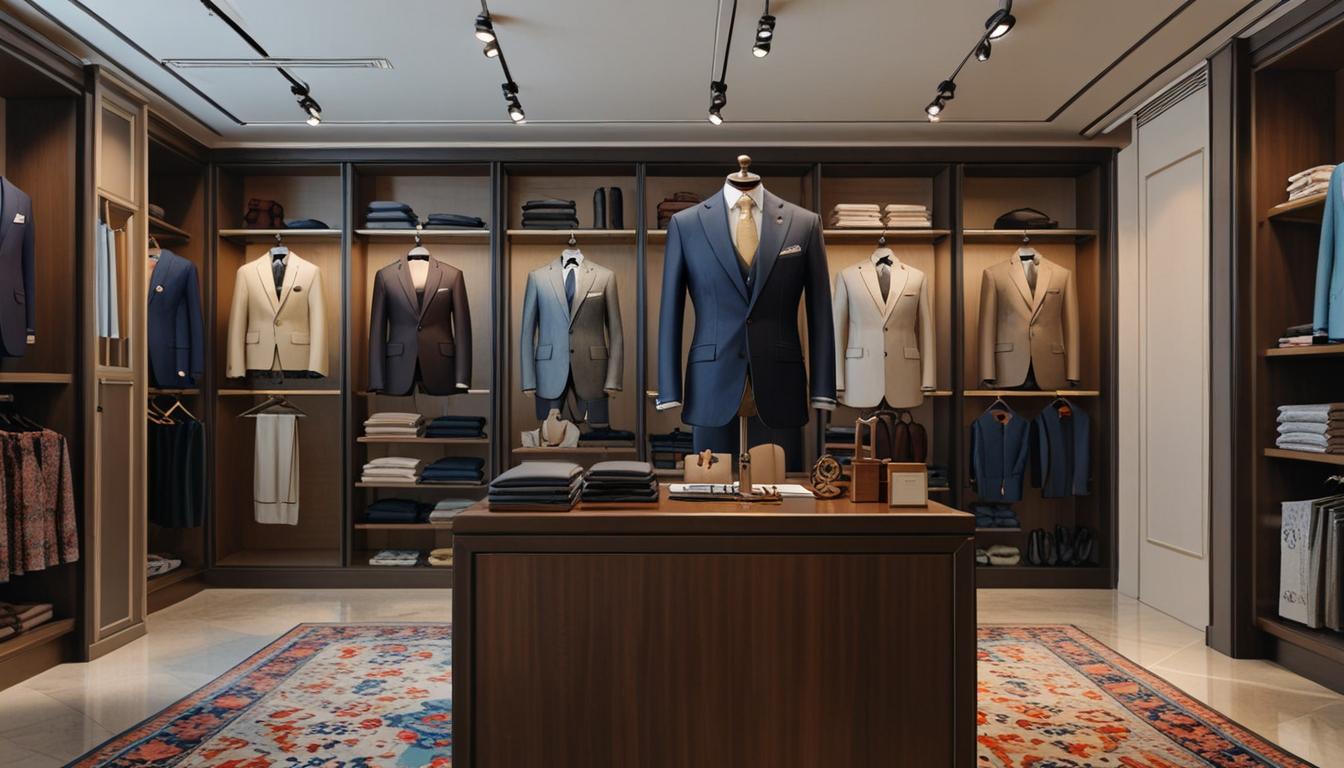You might find it intriguing that Max Mara was established in the early 1950s by Achille Maramotti in Reggio Emilia, Italy. Initially named Confezioni Maramotti, it aimed to cater to the needs of working women in a rapidly changing post-war society. By 1957, it transformed into the iconic brand that we recognize today. But what drove Maramotti's vision, and how did it evolve into a global powerhouse in the fashion industry? The answers might surprise you as you explore its remarkable journey.
Founding Years and Vision

In the early 1950s, a vision began to take shape in Reggio Emilia, Italy, as Achille Maramotti founded Max Mara at just 24 years old. Drawing inspiration from his family's rich tailoring heritage, Maramotti sought to revolutionize women's fashion by creating high-quality clothing that married the elegance of French haute couture with innovative industrial processes. His goal was ambitious yet clear: to provide working women with stylish, sophisticated options during the post-World War II era, a time when their roles in society were evolving.
Initially operating under the name Confezioni Maramotti, the brand quickly gained traction. In 1957, to enhance its international appeal, Maramotti rebranded it as Max Mara, a name that would soon become synonymous with timeless elegance and quality. By 1964, the brand opened its first flagship store on Via Emilia, marking a significant step into the retail market and solidifying its presence in the fashion world.
Max Mara's vision extended beyond just clothing; it was about creating a sense of dignity and empowerment for women. By offering ready-to-wear fashion that combined practicality with style, Maramotti's brand catered to the needs of modern women who desired sophistication without sacrificing comfort. This dedication to high-quality women's clothing not only set Max Mara apart but also paved the way for the brand's enduring legacy in the fashion industry.
Evolution of Design Philosophy
Max Mara's design philosophy has evolved to focus on creating pragmatic, executive suite-ready tailored separates that meet the needs of modern women. This approach not only emphasizes functionality but also aligns with the brand's commitment to timelessness and enduring style. Unlike many brands that chase fleeting fashion trends, Max Mara critiques self-referential concepts that often lack consumer relevance, instead prioritizing pieces that are both stylish and practical.
The iconic 101801 coat, unchanged since its launch in 1981, stands as a reflection of Max Mara's dedication to quality and continuity in fashion. This signature item, along with an impressive archive of over 20,000 pieces, showcases the brand's evolution while highlighting its focus on fit and price as key consumer considerations. You'll find that Max Mara's aesthetic is simple, lovely, and efficient, creating a balance that resonates with women who seek sophistication in their wardrobes.
Growth and Global Expansion

Since its founding in 1951, Max Mara has experienced remarkable growth and global expansion, establishing itself as a leader in women's fashion. Achille Maramotti launched the brand in Reggio Emilia, Italy, and it quickly gained recognition for its innovative designs and commitment to quality. The first flagship store opened in 1964 on Via Emilia, marking the start of Max Mara's retail expansion journey. Fast forward to 2023, and you'll find Max Mara operating in 105 countries, with over 2,500 monobrand stores and a multibrand presence exceeding 10,000 locations worldwide.
The brand's success can be attributed to its broad global appeal, which is enhanced by the introduction of multiple lines, including Sportmax and Weekend Max Mara. These additions have allowed Max Mara to cater to diverse customer preferences while maintaining its core identity. The brand's focus on sophisticated store designs creates an inviting shopping environment, making each visit a delightful experience.
Moreover, Max Mara's commitment to high-quality garment production sets it apart from many other fashion houses. This dedication to excellence not only elevates the brand's reputation but also guarantees customer satisfaction. As you explore its collections and stores, you'll appreciate how Max Mara has seamlessly blended tradition and modernity, driving both growth and global recognition. With a strong foundation laid by Maramotti and a forward-thinking approach, Max Mara continues to flourish on the world stage, embodying the essence of contemporary women's fashion.
Leadership and Family Legacy
Building on a rich family heritage, Achille Maramotti founded Max Mara in 1951, starting a legacy that endures today. At just 24, he drew inspiration from his family's tailoring background to create a fashion house dedicated to high-quality women's clothing. This vision has been carried forward by the Maramotti family, ensuring that the brand remains synonymous with innovation and excellence. Luigi Maramotti, Achille's successor and current chairman, plays an essential role in steering the brand's strategic direction, maintaining the values that have been integral to the family's success.
The family legacy continues with Achille's children, Ignazio and Ludovica, both actively involved in the business. Their hands-on leadership approach reinforces the commitment to quality that Max Mara is known for. This dedication is evident in the company's impressive statistic: over 98% of senior managers are promoted from within, showcasing a culture of growth and opportunity.
Max Mara has flourished into one of the largest fashion houses globally, boasting a diverse portfolio of 19 distinct clothing lines. Each collection reflects the brand's dedication to craftsmanship and style, further solidifying the Maramotti family's influence in the fashion industry. The seamless blend of tradition and modernity illustrates how the family has adeptly navigated changes while staying true to the core values established by Achille Maramotti. This remarkable journey highlights the significance of leadership and a family legacy that continues to inspire generations.
Impact on Fashion Industry

Throughout its history, Max Mara has greatly impacted the fashion industry by pioneering modern prêt-à-porter for women's clothing. Founded in 1951 by Achille Maramotti, the brand revolutionized how we view ready-to-wear garments, blending industrial techniques with the artistry of fashion. This innovative approach brought high-quality, stylish options to women, especially in the domain of luxury apparel.
Max Mara gained immediate recognition for its exquisite coats, drawing inspiration from French haute couture, which notably influenced the fashion landscape. The introduction of the iconic 101801 coat in 1981 set a new benchmark for timeless style and quality in women's fashion, proving that elegance can be both practical and chic.
With over 2,500 monobrand stores in 105 countries, Max Mara has established itself as one of the largest fashion houses, continually shaping the industry's approach to women's clothing. The brand's dedication to creating versatile pieces reflects its commitment to empowering working women, offering them sophisticated options that shift seamlessly from the office to after-hours events.
Max Mara's influence extends beyond fashion; it has played a crucial role in promoting women's identity and style in the post-WWII era. By focusing on quality, practicality, and elegance, Max Mara remains a beacon of inspiration, encouraging women to embrace their individuality while redefining luxury in their wardrobes. It's this blend of innovation and tradition that keeps Max Mara at the forefront of the fashion industry today.




